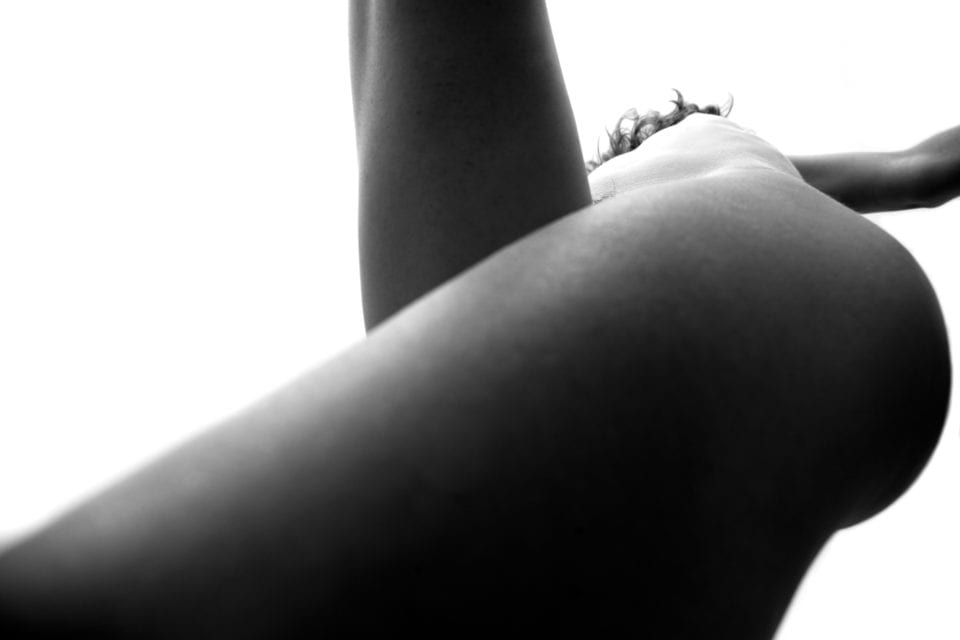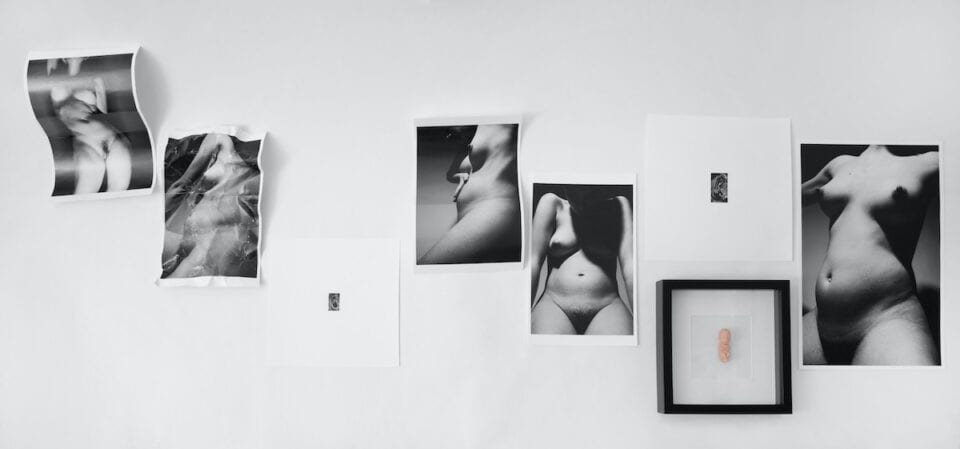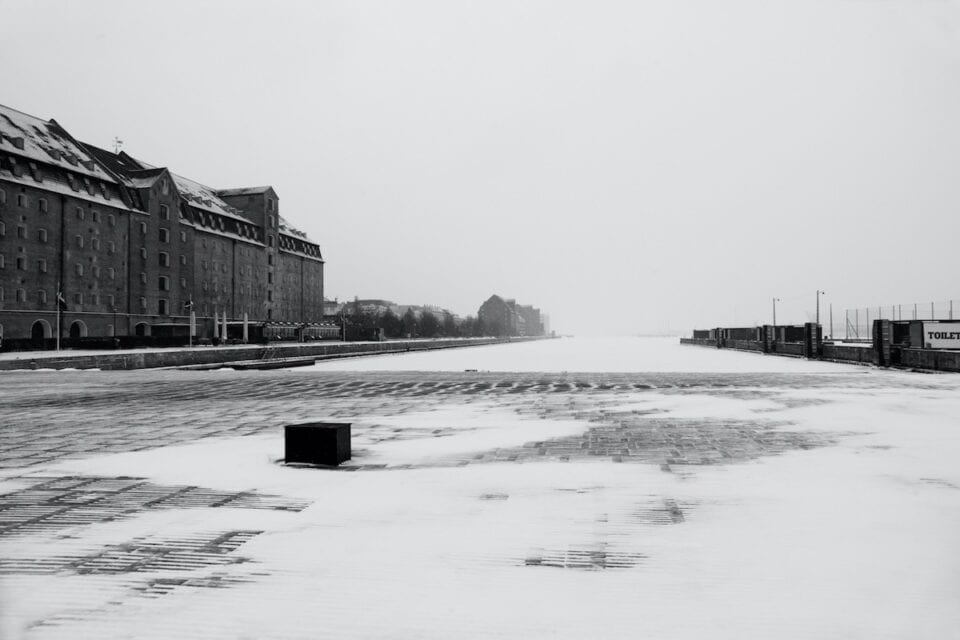Milan-based artist Debora Barnaba originally studied drawing and painting, She later embraced photography, which became her primary method of expression, and for which she has won numerous awards.
Her images express the power of self-portraits, with bodies that are controlled and subverted in favour of the photographic lens. Barnaba’s background can be seen in the formal construction of the shots and in her effort to aestheticise an idea, “tracing” it in the space of a single click.
A: Tell me about your latest project Like a Piece of Paper – it’s both personal and professional!
DB: I think in every artistic work there’s something personal and not only professional; in my series probably more because I also use my body all the time.
This series is, of course, special and more personal than the other ones because it talks a lot about my perception about pregnancy. I’m trying to explore this moment and all the changes that happen in a woman, because many times we don’t know and don’t see them before we go through it.
There are many ideas about pregnancy – for example that it’s going to be so happy and beautiful, but in this project I want to also show all of the difficulties and bad thoughts I’ve had since the beginning of my journey. I think it’s important to be more sincere about this topic, and not only just about becoming a mother.
A: Has the process of how you construct these latest self-portraits changed, or is the approach generally the same as used for the Over the Bridge series, for example?
DB: It depends. Sometimes it starts from a specific idea, and other times it’s just about exploring the way I look at the body. Usually I don’t consider my pictures as self-portraits – I think of them as just me using my body as a model’s body.
For every project, I try to have a different perspective, not only in the image, but looking at the body itself. I believe there are so many things not explored about body language; I want to find them and understand them, and to give people a new vision of the body, and ultimately of themselves.

A: Have you experimented with different types of photographic paper?
DB: Yes, always. I think the print and frame are part of the piece, so I always select the right kind of paper and frame for every series. They can really change the perception of an image.

A: Do you have a written diary of your current experiences, or do the photographs serve as a diary?
DB: I have a diary, but I use it just to write about the most important things happening in my life. My photos are not my diary; in them I try to talk about the body in a universal way – not too personal. The only diary I’m writing now is about my pregnancy: all of the things I’m thinking and experiencing, although this will be also a part of my series Like a Piece of Paper.
A: Has the deeply personal experience of charting your pregnancy inspired you to think about how your photography practice has evolved over the years?
DB: Yes, sure. I always try to understand and evolve in my work, and to grow more and more, and become stronger in what I do – so it’s not only about this moment.

A: To what extent do you think you have evolved alongside your work?
DB: I think personal evolution goes strictly together with my work. But I think it’s the same for every artist.
A: What first inspired you to focus on self-portraiture?
DB: In the beginning, my idea wasn’t to work on my body, but as a self-taught photographer, I didn’t have any samples to show to the models in order to ask them to pose for me. That’s why I started taking pictures of myself. Then it became part of my language: I can use, stress and explore my body as I want. It’s really important to me.
A: You’ve noted that you work is “a new vision of the body” – tell me more about this.
DB: The body has always been part of art, but I think there’s still a lot of it that’s missing in all the history of art, not just photography. I want to try to talk about this. I don’t think the body and the nude has been completely explored; I try to give to people a new vision, because this is the purpose of art for me: to give new visions of the world, to the world.
A: What is it like for you to photograph other people?
DB: It’s quite difficult when it comes to nudes, because I need a long time to have a good connection with other people, and to make them understand what I want.
A: How important is the use of lighting in your work – for example, the differences in lighting between the Like a Piece of Paper and the Sphinx series?
DB: As a photographer, light is very important to me. It’s part of a language that can say one thing or another. If you take the same picture with different lights, the meaning of it changes completely.
In the Sphinx series I didn’t want to talk about emotions, as the sphinx is a metaphysical creature. The lighting in Like a Piece of Paper is different, as it’s dedicated to personal feelings – I wanted to show the difficulties of these moments and experiences, so that’s why I used strong and contrasting light.
A: You have experimented with video in works such as To the Sky and Breathe – do you have further plans for this medium?
DB: Yes, as video is part of my vision. For example, I want to use video in the Like a Piece of Paper series. As video is different from photographs, it gives me the opportunity to investigate the body whilst showing movement.

A: How do you think your practice will evolve in 2020 – will you continue to focus on self-portraiture? Do you think you will return to other subjects, such as shown in your Places series?
DB: Sometimes I feel that I want to go out of myself, and that’s why I take photographs of other subjects. Over the years I’ve many pictures, not only of the body, and usually for commissioned projects. And I like this, as I can change my views and perspectives, so that when I come back to the body I can see something new.

I don’t know what I’m going to shoot next, but I think I will continue with projects like Untitled and Like a Piece of Paper. And probably I’ll also be talking about becoming a mother, and not only about pregnancy. I like to be surprised by my work, so I’ll see what happens.
www.dbartworks.it
www.instagram.com/deborabarnabaartist
Lead image: from the Over the Bridge series.
The work of Debora Barnaba appears in the Artists’ Directory in Issue 94 of Aesthetica. Click here to visit our online shop.













